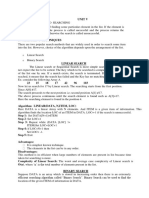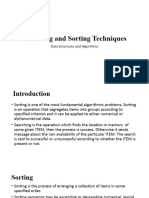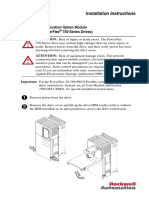0% found this document useful (0 votes)
7 views27 pagesChapter Three Search and Sorthing Algorithm
Chapter Three discusses searching and sorting algorithms, highlighting key methods such as Sequential Search, Binary Search, and various sorting techniques like Insertion Sort, Selection Sort, and Quick Sort. It explains the principles behind each algorithm, their time complexities, and provides implementation examples. The chapter emphasizes the importance of these algorithms in efficiently managing and organizing data.
Uploaded by
babsobatuCopyright
© © All Rights Reserved
We take content rights seriously. If you suspect this is your content, claim it here.
Available Formats
Download as PPTX, PDF, TXT or read online on Scribd
0% found this document useful (0 votes)
7 views27 pagesChapter Three Search and Sorthing Algorithm
Chapter Three discusses searching and sorting algorithms, highlighting key methods such as Sequential Search, Binary Search, and various sorting techniques like Insertion Sort, Selection Sort, and Quick Sort. It explains the principles behind each algorithm, their time complexities, and provides implementation examples. The chapter emphasizes the importance of these algorithms in efficiently managing and organizing data.
Uploaded by
babsobatuCopyright
© © All Rights Reserved
We take content rights seriously. If you suspect this is your content, claim it here.
Available Formats
Download as PPTX, PDF, TXT or read online on Scribd
/ 27
























































































